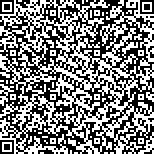| 摘要: |
| [摘要] 目的 观察内源性硫化氢(H2S)对柯萨奇病毒B3(CVB3)所致病毒性心肌炎(VMC)小鼠心肌内病毒复制的影响,探讨内源性H2S在VMC发病机理中的作用。方法 雄性Balb/c小鼠通过腹腔接种CVB3复制VMC模型。75只雄性Balb/c小鼠随机分为5组(每组15只):正常对照组、VMC组及胱硫醚-γ-裂解酶(CSE)不可逆抑制剂-炔丙基甘氨酸(PAG)低、中、高剂量干预组(PAG给药采用皮下注射,PAG低、中、高剂量干预组的PAG剂量分别为:20.0、40.0、80.0 mg·kg-1,1次/d,共6次。PAG的首次给药为腹腔接种CVB3的同时皮下注射PAG)。于腹腔接种CVB3后第7天处死小鼠。用光镜观察心肌组织的病理变化;用分光光度法测定心肌组织的H2S含量;用酶免疫吸附法测定心肌组织的CSE活性及血清的心肌肌钙蛋白Ⅰ(cTnⅠ)含量;用逆转录-聚合酶链反应方法检测心肌组织CVB3mRNA表达。结果 VMC组心肌组织的CSE活性、H2S含量明显低于正常对照组(P﹤0.01),心肌组织的病理积分、CVB3mRNA表达水平及血清的cTnⅠ含量明显高于正常对照组(P﹤0.01);PAG低、中、高剂量3个干预组心肌组织的CSE活性、H2S含量明显低于VMC组(P﹤0.01),心肌组织的病理积分、CVB3mRNA表达水平及血清的cTnⅠ含量明显高于VMC组(P﹤0.01)。结论 心肌内源性H2S能抑制CVB3在心肌内复制。 |
| 关键词: 病毒性心肌炎 柯萨奇病毒B3 胱硫醚-γ-裂解酶 硫化氢 病毒核酸 炔丙基甘氨酸 |
| DOI:10.3969/j.issn.1674-3806.2011.06.08 |
| 分类号:R 542.21 |
| 基金项目: |
|
| Effect of endogenous hydrogen sulfide on viral replication of myocardium in coxsackievirus B3 induced viral myocarditis of mice |
|
WANG Min, YANG Guan-ming
|
|
Department of Pediatrics,the First Affiliated Hospital of Guangxi Medical University, Nanning 530021,China
|
| Abstract: |
| [Abstract] Objective To observe the endogenous hydrogen sulfide(H2S) on viral replication of myocardium in coxsackievirus B3(CVB3) induced viral myocarditis(VMC) of mice, and to explore the endogenous H2S on pathogenesis of VMC. Methods Male Balb / c mice were inoculated intraperitoneally with CVB3 to reconstrute an animal model of myocarditis. Seventy-five male Balb / c mice were randomly divided into five groups (n=15): normal control group, VMC group, D, L-prepargylycine [PAG, an irreversible inhibitor of cystathionine-γ-lyase (CSE) ] low-dose, middle-dose and high-dose intervention groups, PAG was administered by subcutaneous injection (sc). The mice were inoculated intraperitoneally with CVB3 while sc PAG(the dosage of PAG in three intervention groups were 20.0, 40.0, 80.0 mg·kg-1, respectivelly) each day one time for six times. All mice were sacrificed at seven days after inoculated intraperitoneally with CVB3. The pathological changes of myocardial tissues were observed with light microscope. The content of H2S was determined by spectrophotometry in myocardial tissue. The activity of CSE and content of cardiac troponinⅠ(cTnⅠ) were determined by enzyme-linked immunosorbnent assay method in myocardial tissue and serum, respectively. The expression of CVB3mRNA was detected by reverse transcription-ploymerase chaine reaction in myocardial tissue. Results VMC group compared with normal control group: The activity of CSE and content of H2S in myocardial tissues were significantly lower than those in normal control group(P﹤0.01), the pathological scores and expressive level of CVB3mRNA in myocardial tissues, the content of cTnⅠin serum were significantly higher than those in normal control group(P﹤0.01). PAG three intervention groups compared with VMC group: The activity of CSE and content of H2S in myocardial tissues were significantly lower than those in VMC group(P﹤0.01), the pathological scores and expressive level of CVB3mRNA in myocardial tissues, the content of cTnⅠin serum were significantly higher than those in VMC group(P﹤0.01). Conclusion The CVB3 replication was inhibited by endogenous H2S in myocardium. |
| Key words: Viral myocarditis Coxsackievirus B3 Cystathionine-γ-lyase Hydrogen sulfide Viral nucleic acid Propargylglycine |

